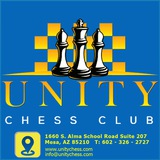📕Unity Chess Multiple Choice 103
A: b5 – 11
👍👍👍👍👍👍👍 79%
C: f4 – 2
👍 14%
B: h5 – 1
👍 7%
👥 14 people voted so far.
A: b5 – 11
👍👍👍👍👍👍👍 79%
C: f4 – 2
👍 14%
B: h5 – 1
👍 7%
👥 14 people voted so far.
📕Unity Chess Multiple Choice 104
A: Qd3 – 11
👍👍👍👍👍👍👍 55%
C: g4 – 7
👍👍👍👍 35%
B: Qg4 – 2
👍 10%
👥 20 people voted so far.
A: Qd3 – 11
👍👍👍👍👍👍👍 55%
C: g4 – 7
👍👍👍👍 35%
B: Qg4 – 2
👍 10%
👥 20 people voted so far.
This media is not supported in your browser
VIEW IN TELEGRAM
🔸European Team Championship 2017
🔸Round 8
⚪️Grischuk,Alexander (2785)
⚫️Mamedyarov,Shakhriyar (2791)
🔸0-1
🔸Round 8
⚪️Grischuk,Alexander (2785)
⚫️Mamedyarov,Shakhriyar (2791)
🔸0-1
This media is not supported in your browser
VIEW IN TELEGRAM
🔸European Team Championship 2017
🔸Round 8
⚪️Radjabov,Teimour (2741)
⚫️Nepomniachtchi,Ian (2733)
🔸1-0
🔸Round 8
⚪️Radjabov,Teimour (2741)
⚫️Nepomniachtchi,Ian (2733)
🔸1-0
📕 After either 14...h5? 15.g5 and h4, or 14...f4? 15.h4! black will have no counterplay on the kingside.
The correct move is the aggressive move 14...b5! to blow up the center in the next few moves.
The correct move is the aggressive move 14...b5! to blow up the center in the next few moves.
📕 16.Qg4 and 16.Qd3 are normal moves that give white slight advantage.
1.g4! is a strong move, which leads to a bind over light squares.
1.g4! h3 2.Be4 Nh4 3.0-0 g6 4.Kh1 Bg7 5.f5+/- with an eventual Nc2-b4-c6 maneuver.
1.g4! is a strong move, which leads to a bind over light squares.
1.g4! h3 2.Be4 Nh4 3.0-0 g6 4.Kh1 Bg7 5.f5+/- with an eventual Nc2-b4-c6 maneuver.
📕Unity Chess Multiple Choice 105
B: a3 – 6
👍👍👍👍👍👍👍 75%
C: N1h2 – 2
👍👍 25%
A: d4
▫️ 0%
👥 8 people voted so far.
B: a3 – 6
👍👍👍👍👍👍👍 75%
C: N1h2 – 2
👍👍 25%
A: d4
▫️ 0%
👥 8 people voted so far.
📕Unity Chess Multiple Choice 106
C: f×g4 – 7
👍👍👍👍👍👍👍 64%
A: Be1 – 4
👍👍👍👍 36%
B: Re1
▫️ 0%
👥 11 people voted so far.
C: f×g4 – 7
👍👍👍👍👍👍👍 64%
A: Be1 – 4
👍👍👍👍 36%
B: Re1
▫️ 0%
👥 11 people voted so far.
📘 4...Bd6
This move at first sight seems contradictory to the basic opening principle that states that pieces should be developed in a way they do not hinder the development of the other pieces. Yet, this move, which is played by many top players such as Carlsen and Aronian, is completely playable. Black defends e5 for the time being and will move the d6 bishop after 0-0 and Re8.
This move at first sight seems contradictory to the basic opening principle that states that pieces should be developed in a way they do not hinder the development of the other pieces. Yet, this move, which is played by many top players such as Carlsen and Aronian, is completely playable. Black defends e5 for the time being and will move the d6 bishop after 0-0 and Re8.
📘 Although black is a pawn down, his position is preferrable due to his active rooks. To makes his attack successful, black needs to add his knight to attack. But how?
In the game after 29...Ra2 30.Rf1 black was not able to add his knight to attack and finally the game ended in a draw.
29...Rg3+! 30.Kh1 Rf2! 31.Bd7 (31.Rb3 Nxg4) 31...Rgxf3 32.Bf5 limiting the knight Ra2-+
In the game after 29...Ra2 30.Rf1 black was not able to add his knight to attack and finally the game ended in a draw.
29...Rg3+! 30.Kh1 Rf2! 31.Bd7 (31.Rb3 Nxg4) 31...Rgxf3 32.Bf5 limiting the knight Ra2-+
📘 6...g5
The surprising preparation of Mamedyarov is shown with employing this very rare continuation. For the first time, Lajos Portisch successfully used this move against Victor Korchnoi in 1963.In fact, the original idea was introduced by Igor Bondarevsky who played this move instead of Bd7 in 1963.
The surprising preparation of Mamedyarov is shown with employing this very rare continuation. For the first time, Lajos Portisch successfully used this move against Victor Korchnoi in 1963.In fact, the original idea was introduced by Igor Bondarevsky who played this move instead of Bd7 in 1963.
